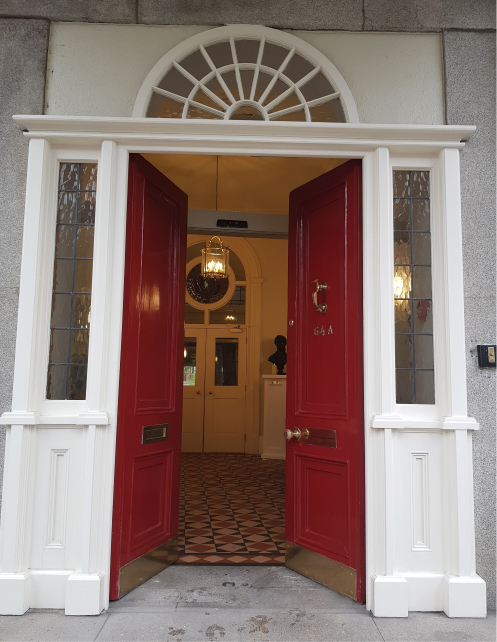Remembrance of Catherine McAuley's Death Day
Each day is a step we take towards eternity,
and we shall continue to step from day to day
until we take the last step,
which will bring us into the Presence of God;
let us always walk before God
in anticipation of that day.
Catherine McAuley
Introduction
In the evening of Thursday, November 11, 1841, Catherine McAuley, the founder of the Sisters of Mercy, died at the Convent of Mercy on Baggot Street, Dublin. She was surrounded by members of the Baggot Street, Booterstown, and Limerick communities.
Let us take a moment to step into Catherine’s bedroom. Enter gently, silently, reverently. Reflect on the sacred space in which she died. Listen with the eyes of your heart as one poet describes the room in which Catherine died.
Poem
The warmth of a late summer Dublin evening
reaches across acres of Georgian chimneypots
and flows through two vast rectangles of light
as I sit in the room in which a woman died
over one hundred and fifty years ago,
awed at the mystery of her calling,
the grace which grew in her.
What is she to me and I to her?
She is present but elusive
I know her and do not know her.
She leaves broad brush strokes not minute disclosures,
Her person less important than her spirit and her purpose.
Not for our times, not for words,
so much of who this Catherine was, it seems.
I ask for some glimmer of knowing,
some small window on her spirit,
a blessing as I sit here, of kinship and connection,
of mentor and sister-guide, of bonds across time,
a mercy shared.
Mary Wickham rsm (2002), Baggot St Suite: Catherine's Room, Window. Used with permission
Reflection
As you enter Catherine’s room, become aware of the symbols which surround you – the window, chair, prie-dieu, hearth, cup and saucer, and bed jacket. Take notice as well of the floorboards.
Window:
Approach the window. Feel the warmth that flows ‘through the two vast rectangles of light’. What feelings dwell in you as you feel the silence, the warmth, the light? What ‘small window of Catherine’s spirit’ would you like to share?
Hearth:
Focus your eyes on the hearth. It calls us to ‘make mercy blaze’ as we are “Mercying into the future.” In what ways can you kindle the fire of God’s mercy and embrace a culture of compassion as the core of our legacy of Mercy?
Cup and Saucer:
The cup and saucer were for Catherine ‘ bonds of kinship and gesture of gracious hospitality’. Who are the poor and needy that you greet with a spirit of hospitality and compassion?
Prie-Dieu:
Kneel upon the prie-dieu. What do you see but the cross? Ponder how you feel as you kneel before the cross. What cross in your life has brought you the greatest blessing?
Bed Jacket:
Let your eyes examine the bed jacket and note it is ‘small, worn, fragile’. How is this garment a reflection of the fabric of Catherine’s life? What are some of the threads of my own life and story within the fabric of Mercy?
Floorboards:
As you prepare to leave the room in which Catherine died, become conscious of the floorboards on which you are standing. The poet says ‘the texture of history is seen in mellow wood.’ What texture of history does Catherine hand to us? What ‘story marks of mercy’ stand out in your memory? Savour the feelings, experiences, dreams you touch into as you leave ‘this special room in this special house.’ Express these in prayer, poetry, art or clay.
Catherine's Own Prayer: Suscipe
My God, I am yours for all eternity.
Teach me to cast my whole self
into the arms of your Providence
with the most lively, unlimited confidence in your compassionate, tender pity.
Grant, O most merciful Redeemer,
that whatever you ordain or permit may always be acceptable to me.
Take from my heart all painful anxiety;
suffer nothing to afflict me but sin,
nothing to delight me, but the hope of coming to the possession of You
my God, in your own everlasting kingdom.
Amen. Limerick Manuscript
Prepared by Sisters of Mercy Newfoundland (2018).
Messages to: Diane Smyth rsm


)
)
)